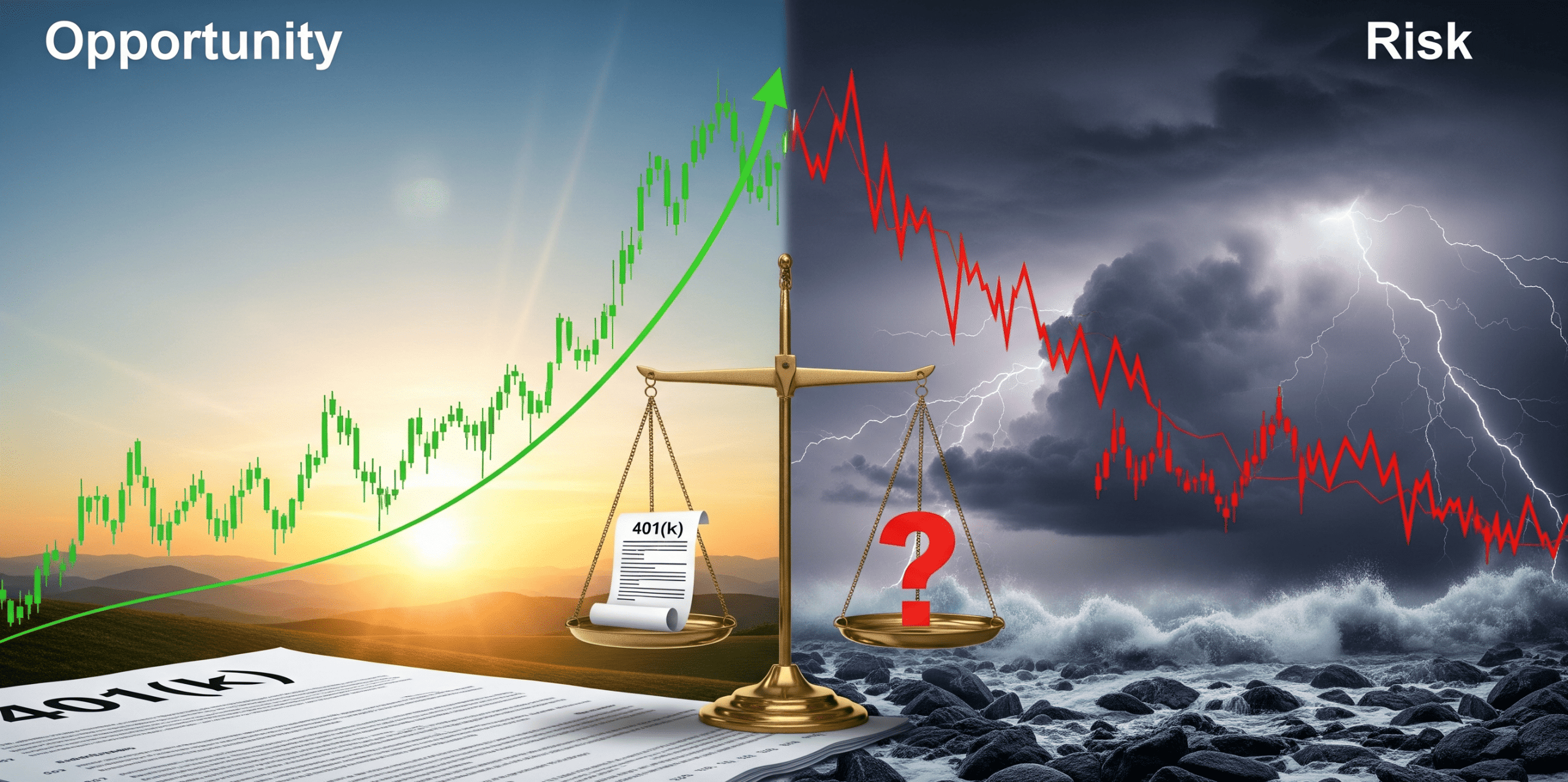President Donald Trump’s recent executive order marks a historic shift in the U.S. retirement savings landscape. For the first time, 401(k) plan administrators will be allowed to include private assets in workplace retirement plans. These assets could range from private equity and venture capital to hedge funds, real estate, gold, and even cryptocurrencies. While the move is designed to diversify retirement portfolios and boost long-term returns, experts caution that it comes with significant risks — particularly for savers who lack deep financial knowledge.
The Executive Order and Its Regulatory Implications
The executive order directs the U.S. Department of Labor (DOL) and the Securities and Exchange Commission (SEC) to draft formal guidance for defined contribution plans that will allow them to integrate private market investments. This is a landmark change, as such investments have historically been out of reach for most individual savers, accessible only to large institutional investors or ultra-high-net-worth individuals.
Regulators will need to define clear legal and operational frameworks, including rules around transparency, liquidity requirements, and proper risk-return balancing.
The Promise – Diversification and Enhanced Returns
Supporters of the move argue that incorporating private assets into 401(k) plans will allow for real diversification beyond the traditional stocks-and-bonds model. BlackRock CEO Larry Fink has suggested a new asset allocation model for retirement portfolios: 50% equities, 30% bonds, and 20% private assets — a departure from the conventional 60/40 split. According to Fink, such a shift could have generated an additional 0.5% in annual returns for retirement plans over the past decades, which compounds into a significant wealth increase over time.
Historically, U.S. pension funds have invested heavily in private markets, consistently outperforming standard 401(k) plans. This policy change seeks to close that performance gap.
The Risk – Liquidity, Complexity, and Transparency
Despite the potential for higher returns, private assets differ fundamentally from publicly traded stocks and bonds. They are less liquid, often locked up for five to ten years or more, and subject to unique, unpredictable events. This makes them ill-suited for savers with shorter time horizons — such as those approaching retirement or changing jobs.
Lisa AK Kirchenbauer, a veteran advisor and founder of Omega Wealth Management, warns: “If you don’t fully understand the investment, don’t buy it.” She advises that even for those who choose to invest, initial exposure should be limited to 5–10% of a portfolio.
The Knowledge Gap Among U.S. Savers
Today, most 401(k) participants invest automatically through target-date funds (TDFs) — products that allocate investments between stocks and bonds based on an expected retirement year. At Vanguard, more than 80% of participants hold target-date funds, and two-thirds of all new contributions flow into them.
This means many savers have little to no awareness of the specific assets in their portfolios. Introducing private assets into this framework could further complicate matters, as these instruments are often opaque and harder to evaluate.
Financial Institutions Move In Quickly
Financial giants have wasted no time responding to Trump’s executive order. BlackRock announced plans to launch target-date funds that incorporate private credit, private equity, and real estate to improve long-term returns. Empower, the second-largest retirement services provider in the U.S., is partnering with Apollo Global Management and Goldman Sachs to integrate private alternatives into retirement portfolios. Voya Financial and Blue Owl Capital have also unveiled initiatives to develop similar products.
The potential market is enormous: U.S. 401(k) assets total roughly $8 trillion. Redirecting even a small portion toward private markets could inject hundreds of billions of dollars into the alternative investment space.
Cost Concerns and Management Fees
One of the key advantages of index funds in 401(k) plans is their low cost, which has driven fees down sharply over the past few decades. Private market investments, however, often come with performance fees and multiple layers of management costs that can erode net returns.
Certified financial planner Cary Carbonaro warns that these fees may harm everyday savers who lack the expertise to assess the long-term impact of such costs. “This can feel like a ‘black box’ investment — there’s not full transparency, and the investor doesn’t always know what’s driving performance,” she says.
Taxation and Regulatory Oversight
Incorporating private assets into 401(k) plans raises complex tax questions, especially for investments abroad, cryptocurrency holdings, or intricate fund structures. Regulators will need to ensure that including these assets does not jeopardize the tax-advantaged status of retirement accounts.
Both the SEC and DOL will be tasked with designing rules that mandate robust risk management, investor protections, and periodic performance disclosures. Without strong oversight, savers could end up taking on risks they don’t fully understand while sacrificing basic transparency.
Macroeconomic Implications
The policy could funnel massive amounts of new capital into private markets, boosting private equity firms, real estate developers, and infrastructure projects. However, it could also increase the risk of “overheating” in certain sectors if large inflows push valuations too high, reducing the potential for strong future returns.
Conclusion and Outlook
President Trump’s executive order represents a turning point in U.S. retirement policy. Adding private assets to 401(k) plans could give savers broader diversification and the chance for higher long-term returns, but it also introduces new risks around liquidity, transparency, and costs.
The ultimate success of this shift will depend on regulators setting clear rules, financial institutions committing to transparency, and savers educating themselves about the vehicles in their portfolios. For the average American worker, this change could either strengthen their retirement savings — or put them at greater risk — depending on how carefully it is implemented.
Comparison, examination, and analysis between investment houses
Leave your details, and an expert from our team will get back to you as soon as possible
* This article, in whole or in part, does not contain any promise of investment returns, nor does it constitute professional advice to make investments in any particular field.
To read more about the full disclaimer, click here- orshu
- •
- 7 Min Read
- •
- ago 1 hour
 The Americas Markets Close Higher: Nasdaq Leads a Strong Day of Gains
The Americas Markets Close Higher: Nasdaq Leads a Strong Day of Gains
The trading day has concluded for the Americas, with major U.S. indices posting solid gains, driven by a positive market
- ago 1 hour
- •
- 7 Min Read
The trading day has concluded for the Americas, with major U.S. indices posting solid gains, driven by a positive market
- orshu
- •
- 8 Min Read
- •
- ago 6 hours
 European Markets Conclude Trading on a High Note: A Deeper Look at Today’s Performance
European Markets Conclude Trading on a High Note: A Deeper Look at Today’s Performance
European stock markets closed today with a largely positive performance, showcasing resilience and investor confidence despite a mixed bag of
- ago 6 hours
- •
- 8 Min Read
European stock markets closed today with a largely positive performance, showcasing resilience and investor confidence despite a mixed bag of
- orshu
- •
- 11 Min Read
- •
- ago 7 hours
 Why Does Every Minor Miss in Earnings Reports Trigger a Market Chain Reaction?
Why Does Every Minor Miss in Earnings Reports Trigger a Market Chain Reaction?
The second-quarter 2025 earnings season is proving to be one of the most paradoxical in recent years. On the surface,
- ago 7 hours
- •
- 11 Min Read
The second-quarter 2025 earnings season is proving to be one of the most paradoxical in recent years. On the surface,
- orshu
- •
- 6 Min Read
- •
- ago 8 hours
 Q2 Revenue Growth – Who’s Leading, Who’s Stable, and Who’s Falling Behind?
Q2 Revenue Growth – Who’s Leading, Who’s Stable, and Who’s Falling Behind?
The second quarter of 2025 marked a strong period for most major technology companies, highlighting a significant gap between the
- ago 8 hours
- •
- 6 Min Read
The second quarter of 2025 marked a strong period for most major technology companies, highlighting a significant gap between the












